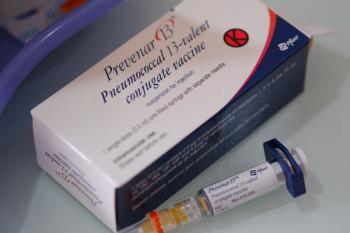
Part 1: Oregon Law May Close Gaps in Patient Care
Episodes in this series
Drug Topics®: Can you touch on some of the consequences of nonadherence due to patients not being able to understand their medication instructions?
Lee: Yeah, so one of the challenges that – 1 out of every 6 emergency department (ED) visits is due to some form of medication issue. And if they become hospitalized, the cost of hospitalization is over $10,000 per episode.
And it has been shown that patients who don't speak the English language are 2-2.5x more likely to make medication errors. Particularly, if you're looking at parents who are giving children liquid doses, and they misunderstand the label instructions or miscalculate the dose based on the concentration. I mean, if you get the decimal point wrong, you're talking about a potential factor of 10 that the patient could give to their kids.
"We have about 25 million people in the US who can't speak the English language very well. What are those people going through? How many of them are making medication errors?"
So, making sure that the patient truly understands exactly how much medicine to take in their language becomes a critical issue to avoid these ED visits and hospitalizations and potential drug overdoses.
Drug Topics®: And as you mentioned before, you have personal ties to this issue. Do you mind discussing your own experience with this?
Lee: Yeah, so I came to the United States when I was 7 years old. And while we were in South Korea, there was myself and 3 other kids, so there's 4 of us. My grandmother took care of us.
And when we came over to the United States, we stayed in Ohio. And after all the kids had left for college, my grandmother decided to move to Los Angeles to Korea Town to actually be around people who she can talk to.
When I went to visit her, I noticed that she had 4 bottles on her kitchen table. I was interested in what she was taking. And when I picked up the pill bottle, I noticed that there was a white piece of paper with Korean handwriting that I couldn't read.
When I asked her about it, she said she goes to the to the doctor, who's actually Korean and talks to her in Korean but she still doesn't understand a lot of what he says, but he gives her a script that she goes to take to the pharmacist, who doesn’t talk to her and gives her pill bottles written in English that she can’t read. And then she had to find somebody in our apartment complex to write it on a piece of paper and tape it to the outside of the pill bottle. Whether they got the translations wrong, or whether they mixed up the pill bottles, I had no idea.
Because of this, I became very interested in what we were doing for language access at the time. And when I approached several folks at the FDA, they said, yeah, it'd be nice to do it in other languages, but we're still struggling with the English language. Which meant that they weren't going to get to the other languages anytime soon.
And considering that, right now, we have about 25 million people in the US who can't speak the English language very well, what are those people going through? How many of them are making medication errors? I think this is not just the right thing to do morally, but economically, for our healthcare system, it makes a lot of sense to implement a lot of these changes.
Drug Topics®: Now, do other states have similar laws for offering translated prescription?
Lee: Yeah, so there are some federal requirements around provision of language services. But in 2009, there was several civil rights complaints in New York State and the Attorney General in that state actually arrived at an agreement with 7 of the pharmacy chains, including like Rite Aid, Walmart, and Target, among others, so that they were required to provide translations and language services in, I believe, 6 languages.
Shortly thereafter, New York City itself passed a law requiring access in several languages for any chain that had 4 or more stores. And then in 2012, New York State passed a law statewide that required any chain that had 8 or more stores to provide language services. But you know, that was kind of limited because that criteria only affected a little over 40% of all the pharmacies in New York State, so over 50% of them weren’t required to provide the service.
Then in 2015, California passed legislation to provide a limited number of translations in, I think, 5 languages. So, New York State and California are the only 2 other states to have such laws. And Oregon’s law is probably the most comprehensive in terms of their language code. Because they require, even if you have 1 store, you're required to provide the service, so I think they have done an excellent job in terms of drafting the legislation for that.
Drug Topics®: Thanks for watching. For more
Newsletter
Pharmacy practice is always changing. Stay ahead of the curve with the Drug Topics newsletter and get the latest drug information, industry trends, and patient care tips.































































































































